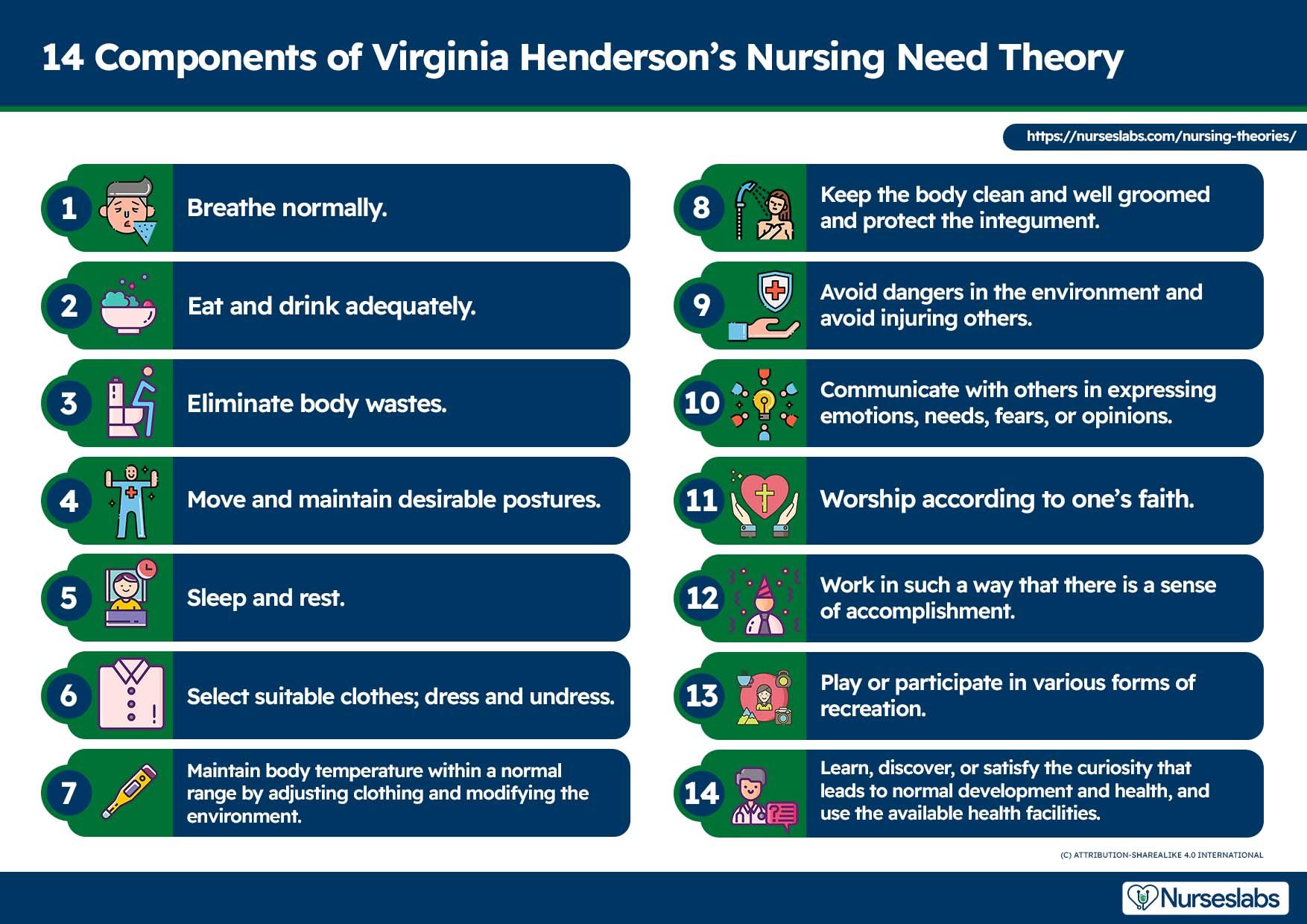Introduction
Throughout human development, nursing has found its place and ground rules. From the beginning of this profession until today, there were always people who moved the process forward. One of those people in nursing is for sure Virginia Henderson. In 1955 she developed the Need Theory, which defines the role of a nurse in patient recovery, consisting of fourteen rules or needs. Virginia Henderson devoted her life to helping people, that is why her contribution to nursing cannot be overestimated.
Background
Theorist’s Background
Virginia Avenel Henderson was an American nurse, theorist, and researcher. For her massive contributions to nursing, she was called “the Florence Nightingale of the twentieth century” (Butts & Rich, 2017, p. 389). She became interested in nursing during World War I because she wanted to help the wounded and sick people in the army. Some of her works, such as Basic Principles of Nursing Care (1960), were translated into more than twenty languages.
Phenomenon of Concern
The main phenomenon of concern, according to the theory, is the quality of care, the process of adaptation to the environment where nursing will be provided, and also interpersonal relationships. Henderson wanted to solve the problem of understanding the needs and rapport between the nurses and other medical workers. Patients have needs, and they need help to improve their health and independence.
Theory Description
The Need Theory consists of fourteen elements that are based on human necessities. These rules are mostly invented to affect the patient to recover as soon as possible. Henderson taught other nurses “to breathe normally,” “to worship according to one’s faith,” “to keep the body clean” (Butts et. al., 2017, p. 390), etc. The main point of this theory was to help patients to recover and feel cared for and independent at the same time. This theory is grand because it cultivates extensive explanations for nursing, and thereafter it has affected the whole world of nursing.
Concepts
Henderson stated that patients need nursing care and help to achieve independence and health or a peaceful death. She believed that a supportive environment facilitates health and that society wants nurses to help people who cannot feel independent. As it is defined in Henderson’s theory, health means balance. Keeping good health is tricky because of age, emotions, culture, and other factors. The nurse’s primary goal is to help the patient become whole and complete.
Diagram

Relationships
These concepts are all connected to one another in different ways. All of them are about and for the health of the patient and his independence. If we consider the fourteen components of Henderson’s Need Theory, we can separate the needs into groups. Most of them are physiological, but there are also safety needs, needs of love and belongingness, and esteem needs.
Evaluation
Weaknesses
Henderson’s theory is a lot simpler than other nursing theories. She describes all types of needs clearly, so the nurses can understand and define what needs of patients are the most important. Other theories show how the needs connect better for nurses to understand. When a nurse assists the patient “in the in the dying process, there is little explanation of what the nurse does to provide peaceful death” (Gonzalo, 2022). However, this theory can and should be used by nurses to enhance their productivity.
Metaparadigms
Henderson’s Need Theory clearly describes all the four metaparadigms. It represents a person or a patient, explains the supportive environment, how it should look and feel, and how it affects the patient and his health and recovery. This theory describes health as independence and balance and nursing as the way to achieve it. All of the four metaparadigms of the theory connect.
Application
Studies That Used the Theory
Different studies used this theory as a basis. One of them is Philosophies and theories for advanced nursing practice (2017) by Butts, J. B., & Rich, K. L. This work used it to compare different models and theories focused on nursing goals and functions. Another study that used this theory is Integrating Nursing Theory and Process into Practice; Virginia’s Henderson Need Theory by Antisham Y. & Jacoline S. They used it to discuss this theory into practice in their setting.
Area of Practice
This theory can be used in many areas of practice. First of all, it can be used in nursing all around the world. This theory is ready for implementation, understandable, and easy to use. This theory can be used in another research and scientific works. Mainly this work can be used to study and teach in schools, colleges, universities, etc.
Conclusion
Virginia Henderson’s Need Theory was a breakthrough at its time and still plays a vital role in nursing after years of practice. She provided the nature of what is, in her opinion, a definition of nursing. This work is not complicated, easy to use, and explains itself. Her theory has led to other views and works about human health and needs and how nurses affect all of it.
References
Butts, J. B., & Rich, K. L. (2017). Philosophies and theories for advanced nursing practice (3rd ed.). Jones & Bartlett Learning.
Gonzalo A. (2022). Virginia Henderson: Nursing need theory. Nurseslabs. Web.
